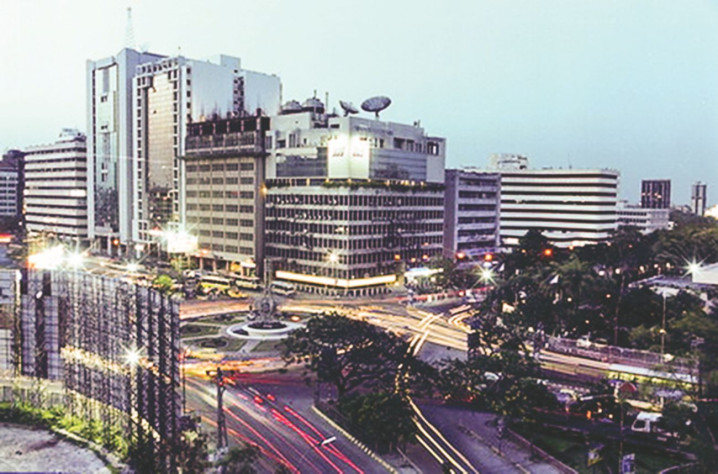Heavy snow in New York left me stranded in an airport hotel where I met a Pakistani woman in the dining room. She expressed her frustration over Pakistan’s economic performance. Being a sister of a Pakistani Army official, she claimed that the country could have done much better had it been run by the military. She went as far as to guarantee that the army can eradicate terrorism within the shortest span of time. She seemed to harbour a little envy over Bangladesh’s growth and did not hesitate to ask about the ‘secrets’ that make the country different from Pakistan or other South Asian countries. Her questions warmed my heart even in the midst of a devastating blizzard that had disrupted the lives of New Yorkers.
Since the 1980s, Bangladesh’s decade-wise average growth shifted roughly one percentage point higher, starting from 3.5 percent to reach 6.5 percent in the 2010s. The case is just the opposite for Pakistan. This contrasting growth performance resembles the takeoff and landing of a planning that justifies Bangabandhu’s call for Bangladesh’s independence almost half a century ago.
The first element that makes Bangladesh different is its pro- developmental leadership. Coming out from the womb of socialist planning, a rapid march for privatisation and market economy has been difficult for a beleaguered nation. Our leadership took that risk to unleash the potential of private enterprises, displeasing a bunch of policymakers and influential economists who initially empowered the bureaucracy by drumming the omnipotence of public enterprises in an indiscriminate manner across the board.
The post-independence planners were so influential in convincing Bangabandhu that Bangladesh will turn into a paragon of progress by simply following a full-scale model of massive nationalisation. A bureaucracy-led business plan did not work in other parts of the world, nor did it function in Bangladesh. The theoretical utopia soon nosedived just after its launching, sending growth prospects down and making Bangladesh a developmental guinea pig. Over the 1970s, Bangladesh’s average GDP growth was 1.5 percent mainly because of three reasons: 1) war 2) massive nationalisation and losing spree in all public enterprises and 3) policy switch toward denationalisation.
Steering Bangladesh’s policy in a diametrically opposite direction had truly been challenging. The liberalisation policy graduated in three steps in the mid 1980s, early 1990s and mid-1990s, marking a wonderful consensus of the pro-market move by all three major political parties – a much needed consensus rarely seen in a newly independent developing nation. That made Bangladesh different from its competitors. The difference also came through the indomitable character of its people. Given the lowest investment in research, Bangladeshis can make the highest amount of innovations as seen in agriculture and services. Despite the high level of corruption, particularly evident in public utilities, Bangladeshis made widespread progress in businesses and services by upholding their considerable dedication. This makes us different.
Bangladesh is a land of continuous positive surprises. At a time when we were focusing on jute, no one probably saw the garments industry emerging, pushing the golden fibre in the page of history, as it occupies an 80 percent share in exports. No one saw the mobile phone industry entering Bangladeshi market vigorously to bring a renaissance in our private and business lives, acting as an integral device for a digital Bangladesh. Who would have thought that cell phones would revolutionise financial transactions to synchronise the heartbeat of the economy with external civilisations and to spur inclusive growth. No one ever thought that Bangladesh, gaining independence a quarter of a century after India and Pakistan, will exceed its privileged neighbours in life expectancy, which is 71 years in Bangladesh – at least five years higher than India’s or Pakistan’s. These positive surprises make Bangladesh different.
The country is different in projecting 7 percent growth for the FY2016 even with the lowest fiscal capacity, sending a message that a rapid rise in the tax-GDP ratio is warranted to accelerate the growth engine. Both India and Pakistan accumulated huge debts from foreign and domestic sources, while Bangladesh did not. The debt burden rose as high as two-third of their respective GDP when the number is only one-third for Bangladesh. Thus Bangladesh’s respectable growth – much higher than Pakistan’s and slightly lower than India’s – is free from debt anxiety. This also sets us apart.
Bangladesh’s economic openness of almost 40 percent, as measured by the trade-GDP ratio, is gradually rising without triggering excessive volatility. Our inflation and growth volatility, which is the lowest in the region in the last 20 years, marks another specialty for Bangladesh. The per capita income has shown a rising trend since 2009, and it is higher than the trend that began in 2002. When I shared this information with the lady originally from Quetta of Pakistan, she did not seem amused. I also shared that the country is one of the strongest growth generators in the world and surveys indicate that almost 70 percent people of the country claim to be happy. This is another point of our difference.
We Bangalis know how to rise from the ashes, we know how to adapt to changes, and we know how to be resilient to bring back the note of vibrancy in the realm of investment and economic growth. This is what makes us different.
